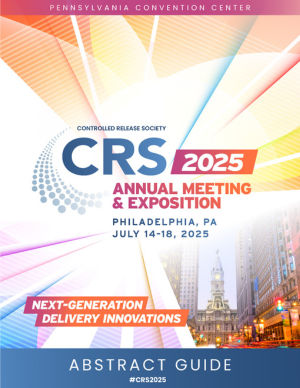Artificial Intelligence and Predictive Models
Tech Session I: Artificial Intelligence and Predictive Models
3D-bioprinted cancer models for prediction of nanomedicine response driven by H&E-based AI algorithm
Tuesday, July 15, 2025
10:29 AM - 10:54 AM EDT
Location: 123
Sponsored By
.png)
Introduction: Many drugs show promising results in laboratory research but eventually fail to show clinical benefit. One main reason for this translational gap is that the cancer models used are inadequate. Most models lack the complex tumor-stromal-immune cell interactions with their tumor microenvironment (TME) that are required for progression. Conventional 2D models, where cells grow on rigid plastic plates mainly as mono-cultures, fail to recapitulate these complex interactions. Hence, we developed two platforms of 3D cancer models that better mimic the TME, a 3D tumoroid and a 3D vascularized model.
Learning Objectives:
At the completion of this activity, participants will know
- Upon completion, participant will be able to list alternatives techniques to animal testing.
- Upon completion, participant will be able to define new targets for nanomedicines.
- Upon completion, participant will be familiar with the role of P-selectin as a nanomedicine target.
Ranit Aharonov – CTO, Pangea Biomed; Opal Avramoff – PhD Student, Tel Aviv University; Tuvik Beker – CEO, Pangea Biomed; Gal Dinstag – Researcher, Pangea Biomed; Anshika Katyal – PhD Student, Tel Aviv University; Anne Krinsky – MD/PhD student, Tel Aviv University; Yulia Liubomirski – Research Associate, Tel Aviv University; Ronnie Shapira-Frommer – Oncologist, Sheba Medical Center; Omer Tirosh – Researcher, Pangea Biomed

Ronit Satchi-Fainaro, PhD (she/her/hers)
Professor, PI, Director, Cancer Biology Research Center
Tel Aviv University
Tel Aviv, Tel Aviv, Israel

